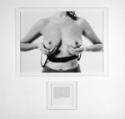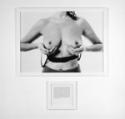Art Of The Day Weekly
#134 - from 21 May 2009 to 27 May 2009
IN THE AIR
Piano, fortissimo?
In the past we had the rock and pop stars– Bob Dylan, the Beatles, the Rolling Stones – and before that it was the great dramatic artists – Sarah Bernhardt or Eleonora Duse. Today, we have the great winners of the Star Academy, the runners of the Formula 1 car race and… architects. As they head firms with hundreds of persons, their celebrity is equal to that of the most mediatized people. Take Renzo Piano for example: his star has not stopped shining since he built the Pompidou Centre with Richard Rogers in 1977. He has built churches and airports, but museums are undoubtedly the area he is most comfortable in. There is a strong competition in this area from Frank Gehry (the Guggenheim Bilbao), Jean Nouvel (the Reina Sofía, quai Branly) or Herzog & de Meuron (the Tate Modern). But Piano is one level above them: the Menil collection, the Beyeler foundation, the Paul Klee center, the High Museum in Atlanta, the Science Academy of California, the LACMA in Los Angeles… The latest exploit is nothing less than the Art Institute in Chicago, with the new 35 000 m2 wing just inaugurated on 16 May. A large glass and steel cube, in which light easily seeps in. And that is not all. We are now waiting for the extensions of the Kimbell, Gardner and Whitney museums. A truly Stakhanovist rhythm…
EXHIBITIONS
Picasso, Cezanne style
AIX-EN-PROVENCE - In 1958, Picasso told one of his gallery owners: « I have just bought Cézanne’s Sainte-Victoire, the original ». he meant by that the castle of Vauvenargues, that would allow him to live closer to his master’s emblematic motif. He thus wrapped up more than half a century of adoration for the painter from Provence that had begun as soon as he arrived in Paris in 1900. The exhibition at the Granet museum, secretly dreaming to equal the success of «Cézanne in Provence» in 2006, groups together some one hundred works by the two men – one third by Cézanne, two thirds by Picasso. It intends to demonstrate the extent of the relationship that linked the two artists: Picasso was influenced by the way in which Cézanne dealt with space, by certain themes he treated (Arlequin, the bathers, the fruit bowls) and would even be a well-informed collector of his paintings.
Sorolla, a Spanish master
MADRID – The last great Spanish artist, a descendant of Vélasquez, Zurbarán and Goya: that is how the Prado wishes to present Joaquin Sorolla (1863-1923) to whom a retrospective is dedicated. Hardly known beyond his country’s borders – even though a great number of foreign institutions keep works by him such as Ca’ Pesaro in Venice or the Orsay museum (Return from fishing ) – the artist from Valencia excelled both in beach and light scenes as well as in portraits, following a path parallel to the post-Impressionists. The exhibit brings together over one hundred paintings, including the famous series of fourteen panels painted for the Hispanic Society of New York on the Visions of Spain. Two years ago the Sorolla-Sargent retrospective at the Petit Palais museum had given the painter the honors he deserves, as he had not been the subject of a retrospective since 1963. At auctions he is among the highest rated artists of his time (4.7 million euros in 2001 for Bath time ). All that is missing is that the public at large give him his well-deserved recognition.
Beauty of other ages
PARIS – Cotton buds, scent balls or a crystal marten head against fleas? At the time of the Renaissance, toilet cases were over-sized and (in our opinion) picturesque. The care of the body became a true ceremony, in which both artisans and artists found an interest. The former created flasks, bottles and combs, the latter perfected a new type of portrait, of a woman in front of her mirror, half-naked. In Ecouen, the splendours of beauty during the Renaissance are evoked by the toilet case from the museum of Basel or the gold bottle decorated with opals from the London Museum. Paintings, drawings by Jean Mignon and cosmetic treaties complete the selection. The museum of Cluny suggests extending the backwards tracking, all the way to Antiquity: Gothic combs, wall paintings from Naples, containers still bearing traces of whitening cream, along with the results of a study by the Centre de recherche et de restauration des musées de France and L’Oréal, about 150 of the products used at that time.
Artoftheday also recommends...
AUCTIONS
Marceau, going, going...
PARIS – He was a universal star, he shook hands with heads of State, filled theatres throughout the world, and was compared to Charlie Chaplin. The curtain has fallen, mime Marceau is no longer here (he died in 2007). His universe is coming back to us, through an auction ordered by the courts, in order to pay back his company’s debts. The public will see the books he read, the furniture and paintings that decorated his home in Berchères-sur-Vesgres, the photographs that show him with Nehru or Rudolf Nureyev, a musical automaton from the XIXth century, and masks from the Japanese theatre. There will also be his stage costumes, his black pencil drawings (he started his studies at the Arts décoratifs in Limoges). In total, 700 lots announced at very moderate prices but which could go for higher prices if any fetishism slips in.

Sophie Calle, Les seins miraculeux, 2001 Black and white photograph, aluminium, text, frame (x2) 100 x 170 cm + 50 x 50 cm Thanks to Jean-Baptiste Mondino © SABAM Belgium 2009 Courtesy Galerie Emmanuel Perrotin, Paris / Miami ; Arndt & Partner, Berlin / Zurich ; Koyanagi, Tokyo ; Gallery Paula Cooper, NY
ARTIST OF THE WEEK

Sophie Calle, Les seins miraculeux, 2001 Black and white photograph, aluminium, text, frame (x2) 100 x 170 cm + 50 x 50 cm Thanks to Jean-Baptiste Mondino © SABAM Belgium 2009 Courtesy Galerie Emmanuel Perrotin, Paris / Miami ; Arndt & Partner, Berlin / Zurich ; Koyanagi, Tokyo ; Gallery Paula Cooper, NY
Sophie Calle: the others and me
She has been unreeling her autobiography for the last three decades: indeed, in her case, the conceptual side of life is expressed in priority through that bias. Whether dealing with the chronicle of love failures or the life of a cleaning woman in a Venetian hotel, the individual Sophie Calle is the first material of Sophie Calle the artist. She has a private detective follow her, she invites strangers to sleep in her bed and scrupulously notes the functioning of their sleep, she tries to meet all the persons mentioned in an address book found in the street, she has 107 different women read the break up letter she receives (Prenez soin de vous, Biennale de Venise, 2007) (Take care of yourself). All of these performances are ritualized and immortalized by photographs. Their content is «common» - in the sense that it is neither exploits nor social events but rather fragments of every day life -, the life of Sophie Calle becomes any other person’s life. The extreme autobiography is close to the strictest anonymity.
BOOKS

The mandatory steps in contemporary art
Where is contemporary art made? In workshops, in galleries, at auctions, in shows? Undoubtedly… but certain venues are more important than others. The author, a sociologist and journalist, leads us through seven chapters and as many unique encounters. A large sale at Sotheby’s, the excited back rooms at Art Basel, the mundane cocktail parties at the Biennale of Venice… As well as the editor’s office at Artforum or the «factory» of artist Murakami, who learned to adopt Taylor principles, as did Jeff Koons or Damien Hirst before him, to meet his fans’ demands. A priori the book is free from any « buddy » characteristic, is far from the official declarations and rich in remarks heard and picked up (experts, collectors, critics). It describes a geography of power, a universe of glitter in which the «kingmakers» juggle dollars by the millions and put the star artists up on their golden thrones. Behind the curtain, 99% of the creators dream of reaching this nirvana. Or repudiate it.
IN BRIEF
ATHENS – The Art Athina contemporary art fair will hold its 15th edition from 21 to 24 May 2009 in the Faliro pavilion .
BARCELONA-The Loop festival, dedicated to video art, will be held from 21 to 31 May 2009.
BUENOS AIRES – The Arteba contemporary art fair is holding its 18th edition from 22 to 26 May 2009 in the pavilions of La Rural.
LONS-LE-SAUNIER – The house of la Vache qui rit (The cow that laughs) will open on 21 May 2009 in a building designed by architects Reichen and Robert. It contains an important collection of boxes, of advertising movies and the original drawing by Benjamin Rabier.
LILLE – In the context of the Europe XXL event, a fair of artists’ books is organized on 21 and 22 May 2009 in the station of Saint-Sauveur.
NEW YORK-The Metropolitan Museum reopened its American art gallery on 19 May after two years of restoration.
PARIS-The 5th night of museums 2009, on May 16 2009, attracted nearly 1.8 million visitors throughout France.
PARIS – French minister of Culture, Christine Albanel, announced on 20 May the creation of a new venue in contemporary creation, « of a new genre » in the unused spaces of the Palais de Tokyo.
